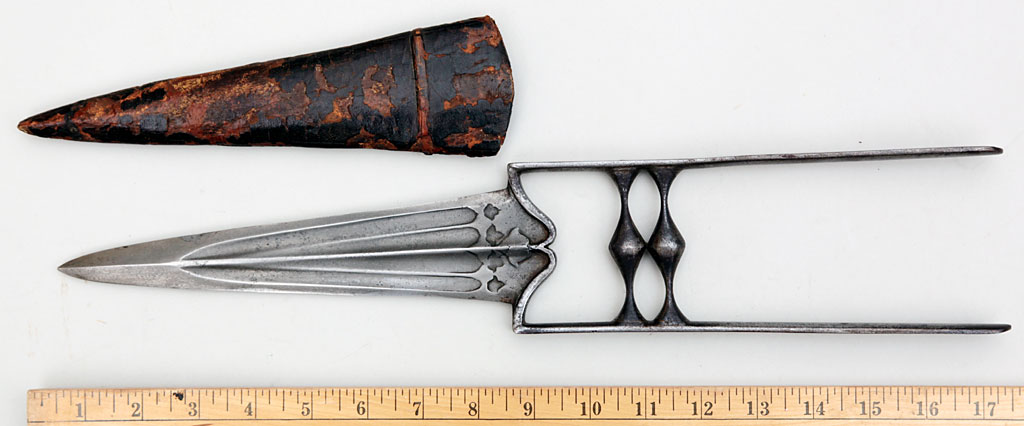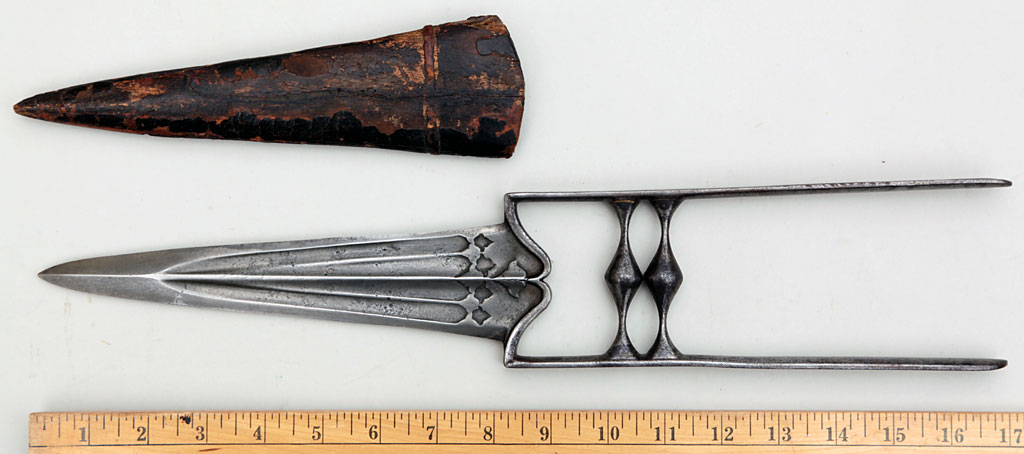
The katar, perhaps more correctly known as a jamadhar ('death tooth'), is a style of dagger limited to the Indian Subcontinent. This example, most likely from northern India, is typical in having a straight double edged blade abruptly arising from a recurved cross piece dipping in the center into the pronounced midrib of the blade and into an trefoil raised above the surrounding ground. The 8¾ inch (22.5 cm) blade of this example has a pair of fullers either side of the mid rib on each face; the inner fullers narrowing and fading against the mid rib. At the base of each fuller is a depressed trefoil shaped device opposite in orientation to the one associated with the mid rib. Wootz Damascus grain is recognized within the fullers and on the surfaces of the thickened (0.35 inch, 0.88 cm) point. There are a few old stable forging flaws or cracks in the area of the raised trefoil on both sides and also diagonally from the midrib to edge near the far end of a fuller as well as scattered mild to moderate pitting. Hand and wrist guards have been attached parallel to the blade on either side of the cross piece base and a grip is formed by a centrally fused pair of cross bars. Seams of yellow brazing may be seen at the joins of the grip and wrist guards. Overall length is just under 17 inches (43 cm) with a weight of 14½ ounces (412 grams). The dagger is accompanied by an old leather covered wooden sheath with much cracking and loss to the leather. Overall sheathed length is 17½ inches (44.5 cm) with a weight of 15 1/3 ounces (437 grams).






